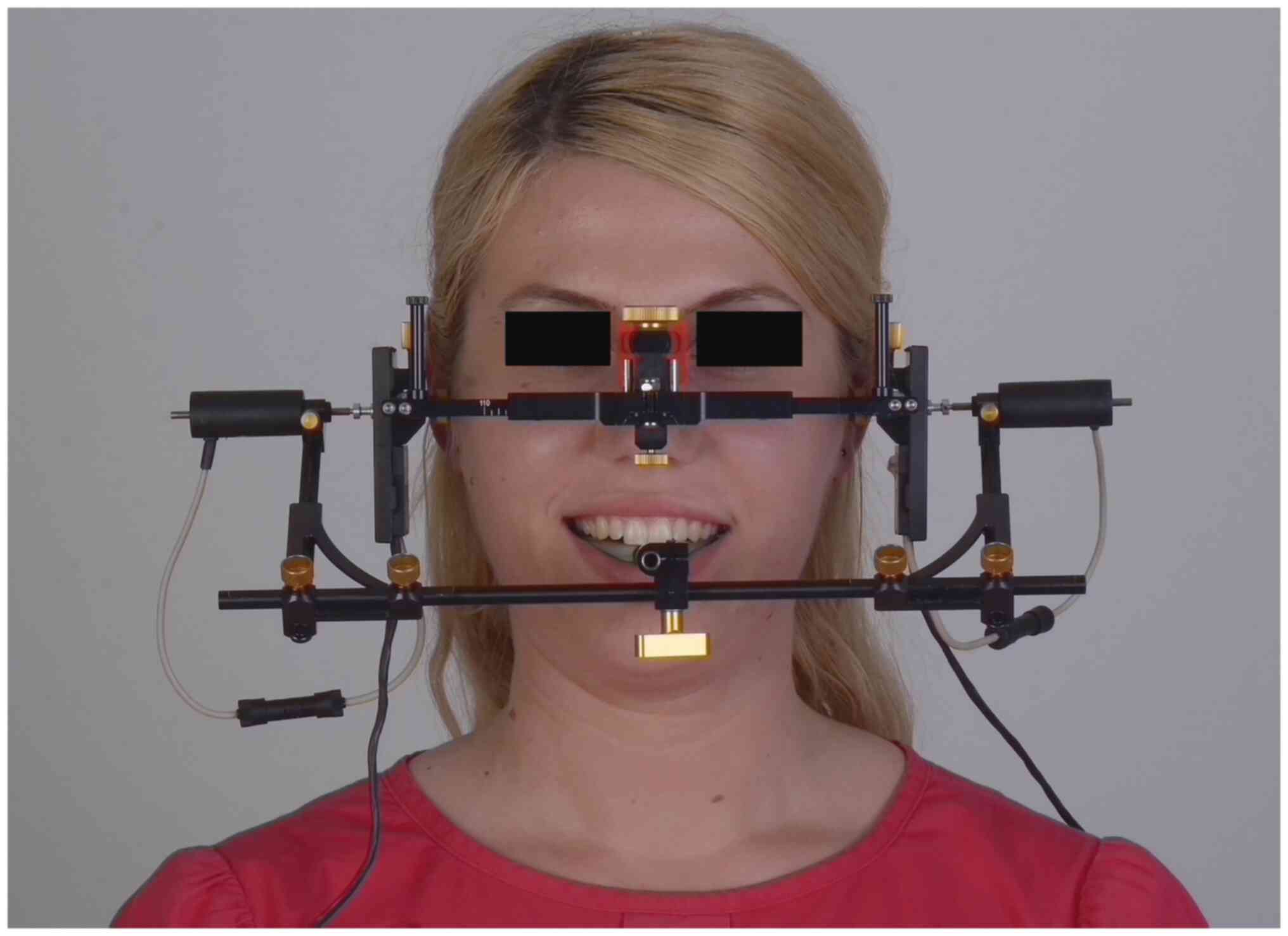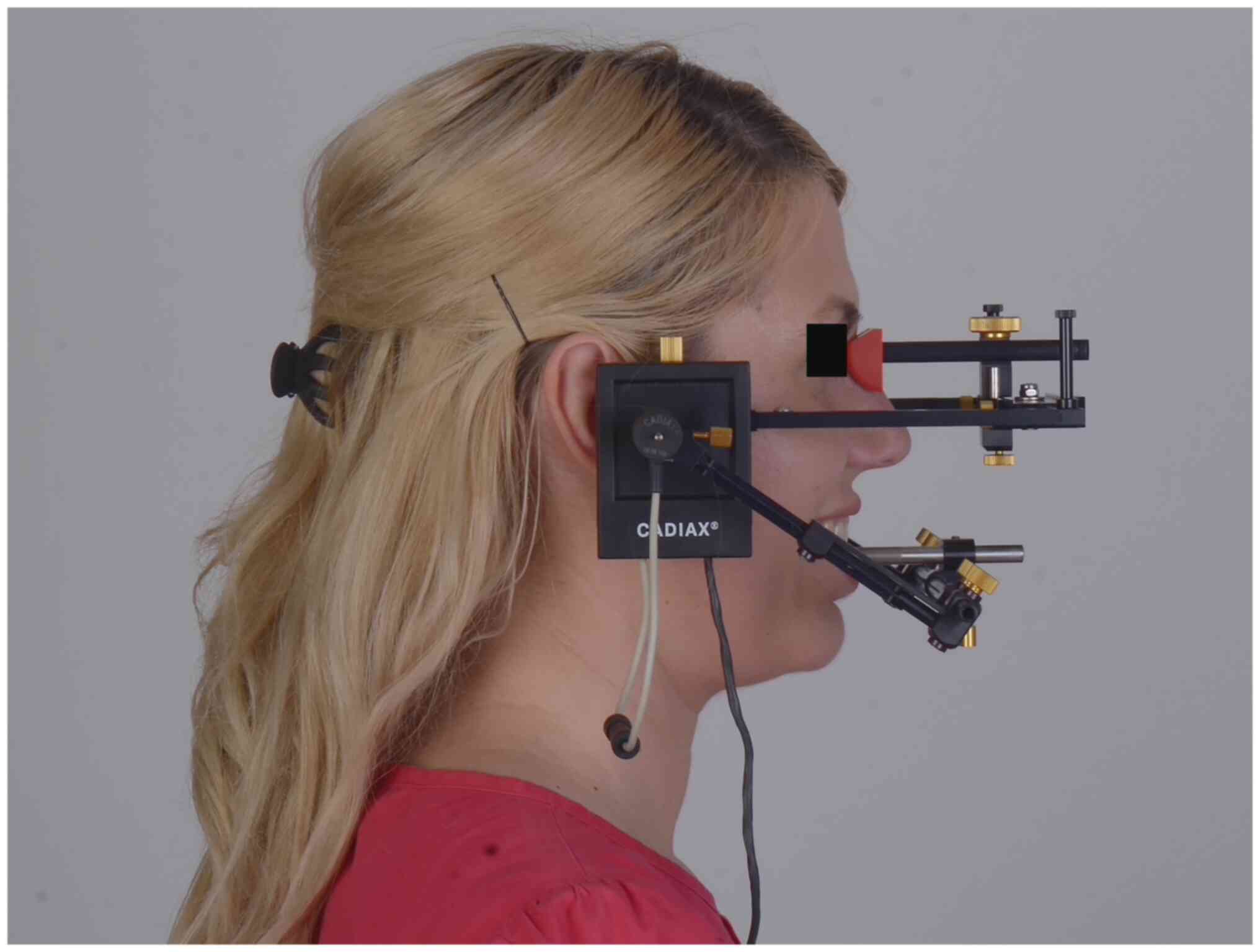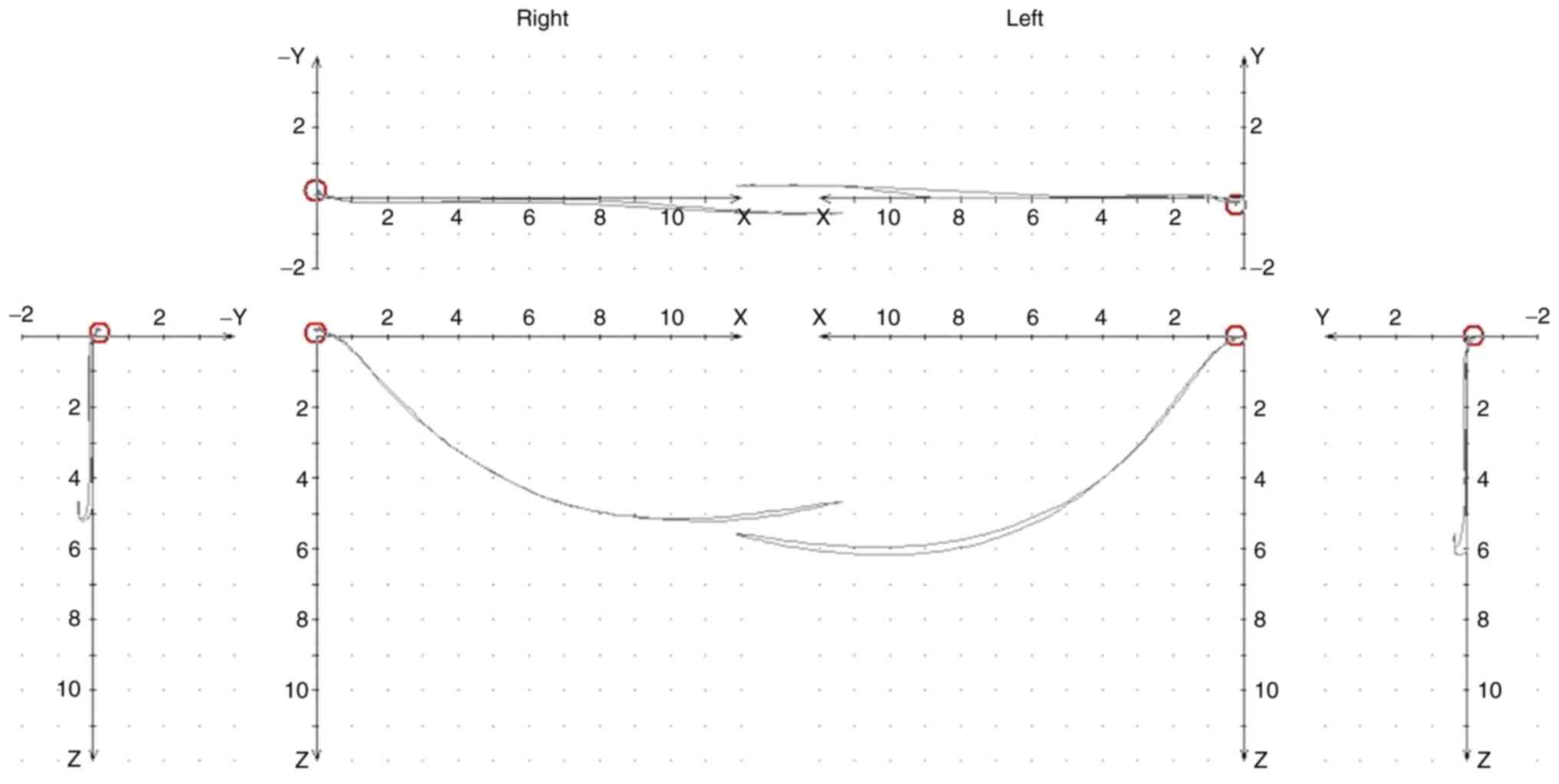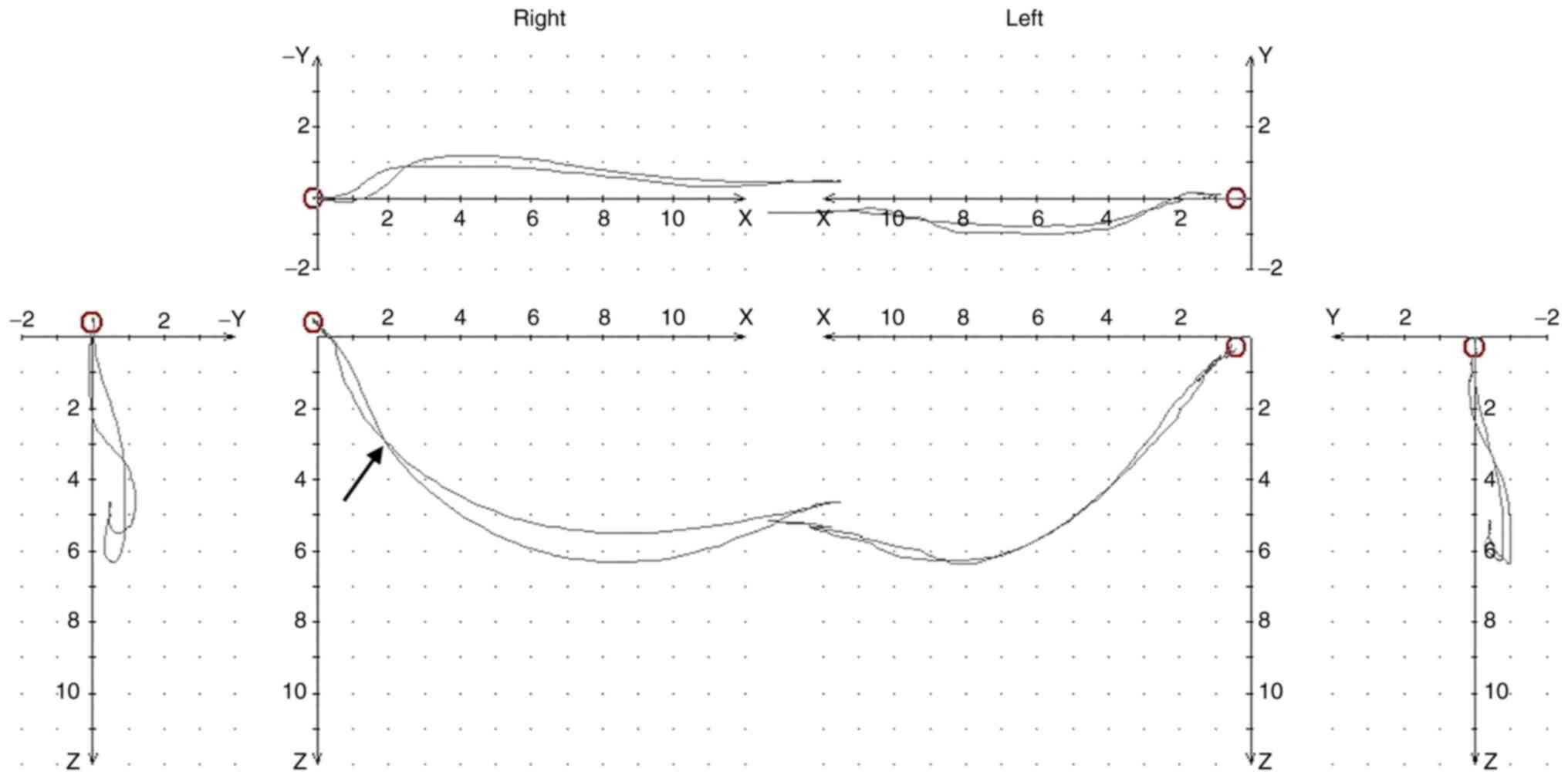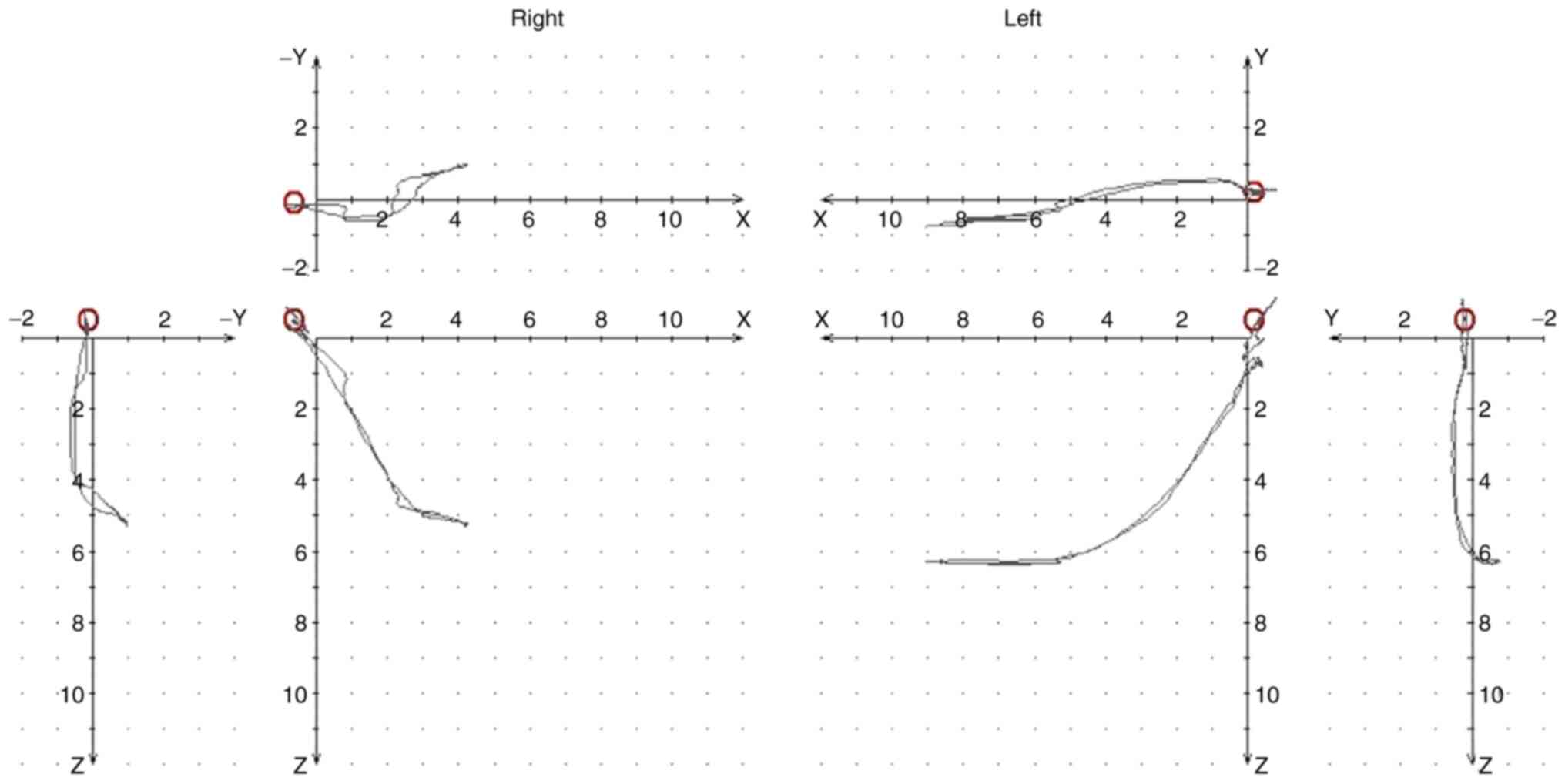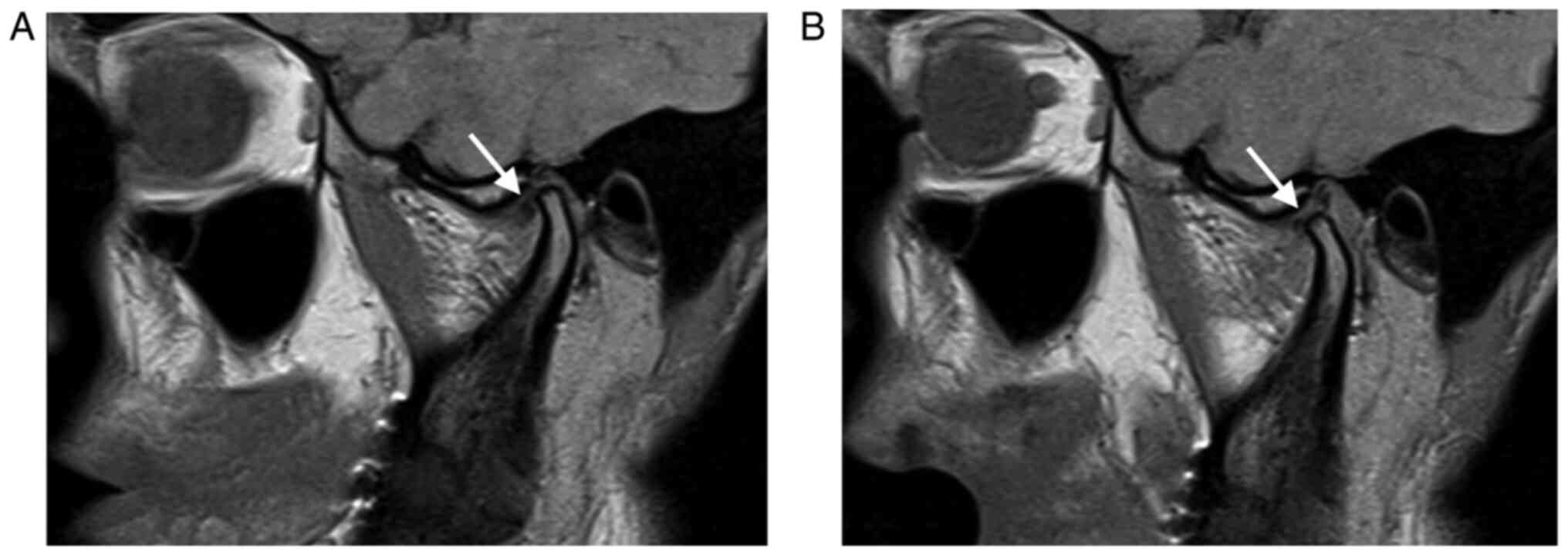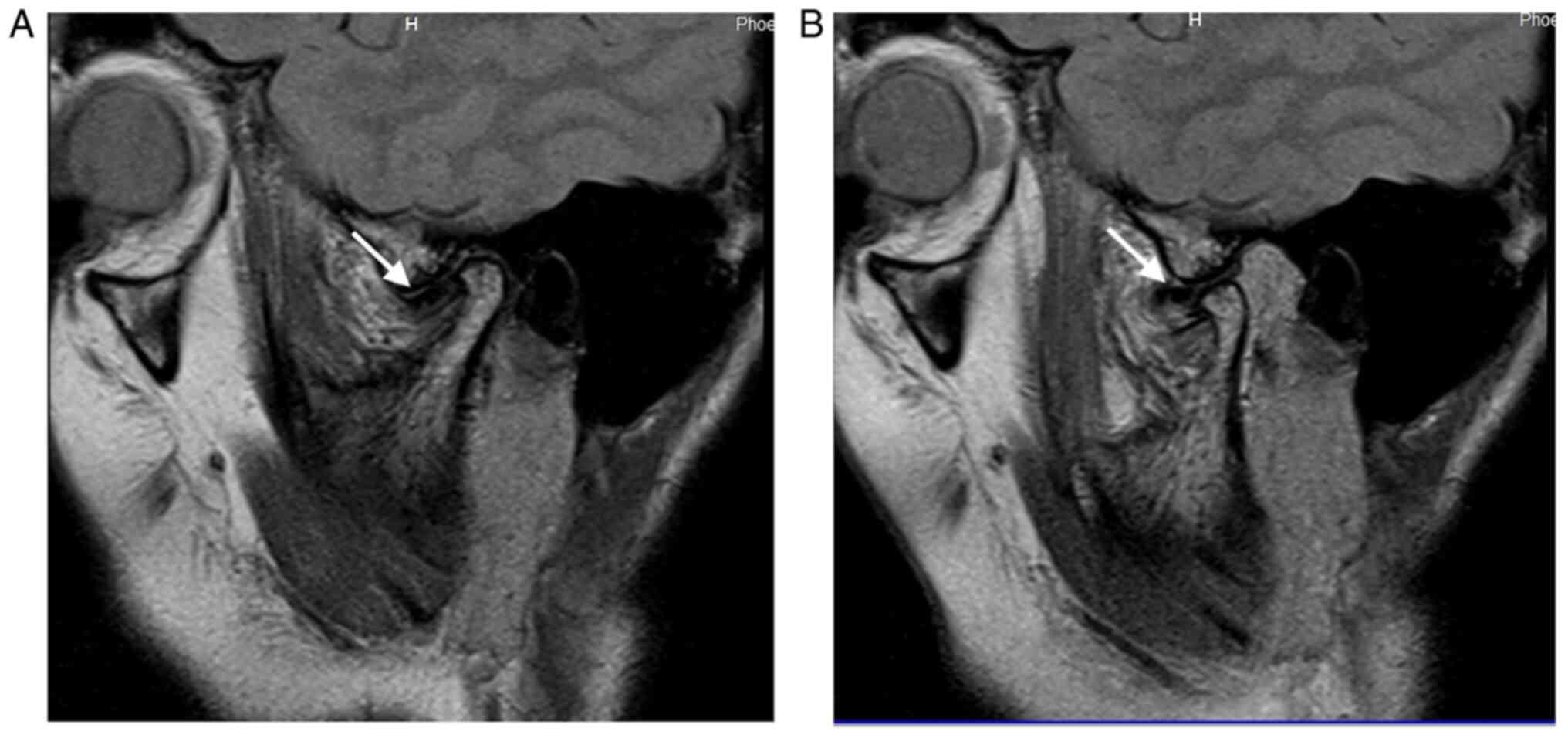|
1
|
Botos AM, Mesaros AS and Zimbran AI: The
contribution of computerized axiography to the functional
evaluation of the temporomandibular joint: A case report. Clujul
Med. 89:438–442. 2016.PubMed/NCBI View Article : Google Scholar
|
|
2
|
Slavicek R: Clinical and instrumental
functional analysis for diagnosis and treatment planning. Part 5.
Axiography. J Clin Orthod. 22:656–667. 1988.PubMed/NCBI
|
|
3
|
Kraljević S, Pandurić J, Badel T and
Dulcić N: Registration and measurement of opening and closing jaw
movements and rotational mandibular capacity by using the method of
electronic axiography. Coll Antropol. 27 (Suppl 2):S51–S59.
2003.PubMed/NCBI
|
|
4
|
Mantout B, Giradeau A, Perez C, Re JP and
Orthlieb JD: Technical validation of a computerized condylographic
system. J Stomat Occ Med. 1:45–60. 2008.
|
|
5
|
Buduru S, Blahuc S, Ciumasu A, Kui A,
Ciobanu C, Almasan O, Manziuc M and Negucioiu M: Temporomandibular
dysfunction diagnosis by means of computerized axiography. Med
Pharm Rep. 93:416–421. 2020.PubMed/NCBI View Article : Google Scholar
|
|
6
|
Celar A and Tamaki K: Accuracy of
recording horizontal condylar inclination and bennett angle with
the cadiax compact. J Oral Rehabil. 29:1076–1081. 2002.PubMed/NCBI View Article : Google Scholar
|
|
7
|
Schierz O, Klinger N, Schon G and
Reissmann DR: The reliability of computerized condylar path angle
assessment. Int J Comput Dent. 17:35–51. 2014.PubMed/NCBI(In English, German).
|
|
8
|
Schiffman E, Ohrbach R, Truelove E, Look
J, Anderson G, Goulet JP, List T, Svensson P, Gonzalez Y, Lobbezoo
F, et al: International RDC/TMD consortium network, international
association for dental research; orofacial pain special interest
group, international association for the study of pain. Diagnostic
criteria for temporomandibular disorders (DC/TMD) for clinical and
research applications: Recommendations of the international RDC/TMD
consortium network and orofacial pain special interest group. J
Oral Facial Pain Headache. 28:6–27. 2014.PubMed/NCBI View Article : Google Scholar
|
|
9
|
Madhavan S, Dhanraj M and Jain AR: Methods
of recording mandibular movements-A review. Drug Invention Today.
10:1254–1259. 2018.
|
|
10
|
Tasaki MM and Westesson PL:
Temporomandibular joint: Diagnostic accuracy with sagittal and
coronal MR imaging. Radiology. 186:723–729. 1993.PubMed/NCBI View Article : Google Scholar
|
|
11
|
R Core Team R: A Language and Environment
for Statistical Computing R Foundation for Statistical Computing:
2020. http://www.r-project.org/index.html (accessed on 21st
of October 2017).
|
|
12
|
Okeson JP: Joint intracapsular disorders:
Diagnostic and nonsurgical management considerations. Dent Clin
North Am. 51:85–103. 2007.PubMed/NCBI View Article : Google Scholar
|
|
13
|
Slavicek R: Diagnostics (Chapter 4). In:
The Masticatory Organ: Functions and Dysfunctions. Gamma
Medizinisch-Wissenschaftliche Fortbildungs-Gmbh, Klosterneuburg,
pp398-409, 2006.
|
|
14
|
Bag AK, Gaddikeri S, Singhal A, Hardin S,
Tran BD, Medina JA and Curé JK: Imaging of the temporomandibular
joint: An update. World J Radiol. 6:567–582. 2014.PubMed/NCBI View Article : Google Scholar
|
|
15
|
Ahangari AH, Torabi K, Pour SR and Ghodsi
S: Evaluation of the Cadiax Compact® II accuracy in
recording preadjusted condylar inclinations on fully adjustable
articulator. J Contemp Dent Pract. 13:504–508. 2012.PubMed/NCBI View Article : Google Scholar
|
|
16
|
Torabi K, Pour SR, Ahangari AH and Ghodsi
S: A clinical comparative study of cadiax compact II and intraoral
records using wax and addition silicone. Int J Prosthodont.
27:541–543. 2014.PubMed/NCBI View Article : Google Scholar
|
|
17
|
Manfredini D: Etiology. Instrumental
approach, Part. II. In: Current Concepts on Temporomandibular
Disorders. Quintessence Publishing Co. Ltd., London, pp223-235,
2010.
|
|
18
|
Widmer CG, Lund JP and Feine JS:
Evaluation of diagnostic tests for TMD. J Calif Dent Assoc.
18:53–60. 1990.PubMed/NCBI
|
|
19
|
Theusner J, Plesh O, Curtis DA and Hutton
JE: Axiographic tracings of temporomandibular joint movements. J
Prosthet Dent. 69:209–215. 1993.PubMed/NCBI View Article : Google Scholar
|
|
20
|
Greene CS: Can technology enhance TM
disorder diagnosis? J Calif Dent Assoc. 18:25–33. 1990.PubMed/NCBI
|
|
21
|
Cooper BC and Rabuzzi DD: Myofacial pain
dysfunction syndrome: A clinical study of asymptomatic patients.
Laryngoscope. 94:68–75. 1984.PubMed/NCBI View Article : Google Scholar
|
|
22
|
Feine JS, Hutchins MO and Lund JP: An
evaluation of the criteria used to diagnose mandibular dysfunction
with the mandibular kinesiograph. J Prosthet Dent. 60:374–380.
1988.PubMed/NCBI View Article : Google Scholar
|
|
23
|
Romanelli GG, Harper R, Mock D, Pharoah MJ
and Tenenbaum HC: Evaluation of the temporomandibular joint
internal derangement. J Orofac Pain. 7:254–262. 1993.PubMed/NCBI
|
|
24
|
Costantinides F, Parisi S, Tonni I, Bodin
C, Vettori E, Perinetti G and Lenarda RD: Reliability of
kinesiography vs magnetic resonance in internal derangement of TMJ
diagnosis: A systematic review of the literature. Cranio. 38:58–65.
2018.PubMed/NCBI View Article : Google Scholar
|
|
25
|
Manfredini D, Favero L, Federzoni E,
Cocilovo F and Guarda-Nardini L: Kinesiographic recordings of jaw
movements are not accurate to detect magnetic resonance-diagnosed
temporomandibular joint (TMJ) effusion and disk displacement:
Findings from a validation study. Oral Surg Oral Med Oral Pathol
Oral Radiol. 114:457–463. 2012.PubMed/NCBI View Article : Google Scholar
|
|
26
|
Parlett K, Paesani D, Tallents RH and
Hatala MA: Temporomandibular joint axiography and MRI findings: A
comparative study. J Prosthet Dent. 70:521–531. 1993.PubMed/NCBI View Article : Google Scholar
|
|
27
|
Rammelsberg P, Pospiech P, May HC and
Gernet W: Evaluation of diagnostic criteria from computerized
axiograhy to detect internal derangements of the TMJ. Cranio.
14:286–295. 1996.PubMed/NCBI View Article : Google Scholar
|
|
28
|
Ozawa S and Tanne K: Diagnostic accuracy
of sagittal condylar movement patterns for identifying internal
derangement of the temporomandibular joint. J Orofac Pain.
11:222–231. 1997.PubMed/NCBI
|
|
29
|
Bracco P, Dergibus A, Piscetta R and
Giaretta GA: TMJ clicking: A comparison of clinical examination,
sonography and axiography. Cranio. 15:121–126. 1997.PubMed/NCBI View Article : Google Scholar
|
|
30
|
Kobs G, Bernhardt O and Meyer G: Accuracy
of computerized axiography controlled by MRI in detecting internal
derangements of the TMJ. Stom Baltic Dent Maxillofac J. 6:7–10.
2004.
|
|
31
|
Piancino MG, Cirillo S, Frongia G, Cena F,
Bracco AA and Bracco P: Axiography and MRI in the diagnosis of
temporomandibular joint pathology. J Stomat Occ Med. 2:50–51.
2009.
|
|
32
|
Piehslinger E, Schimmerl S, Celar A,
Crowley C and Imhof H: Comparison of magnetic resonance tomography
with computerized axiography in diagnosis of temporomandibular
joint disorders. Int J Oral Maxillofac Surg. 24:13–19.
1995.PubMed/NCBI View Article : Google Scholar
|
|
33
|
Piancino MG, Loberi L, Frongia G,
Reverdito M, Slavicek R and Bracco P: Computerized axiography in
TMD patients before and after therapy with ‘function generating
bite’. J Oral Rehabil. 35:88–94. 2008.PubMed/NCBI View Article : Google Scholar
|
|
34
|
Giraudeau A, Cheynet F, Mantout B, Dejou
J, Sarrat P and Orthlieb J: Diagnostic of intracapsular derangement
of TMJ: comparison of clinical examination and condylography with
MRI. Stomatologie. 104:154–167. 2007.
|















